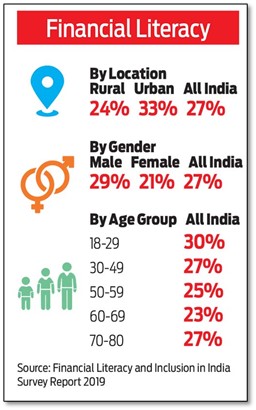Monday, 26th July 2021
Caste Census
In News
The Government of India has decided as a matter of policy not to enumerate caste-wise population other than SCs and STs in Census.
About the News
- Caste-base census has been demanded by several leaders claiming that it will help in better decisions for the people’s development and welfare.
- Recently, the constitutional body National Commission for Backward Classes has also urged the government to collect data on the population of OBCs as part of Census of India 2021 exercise.
- Every Census in independent India from 1951 to 2011 has published data on Scheduled Castes and Scheduled Tribes, but not on other castes. Before that, every Census until 1931 had data on caste. India’s last caste census was conducted 90 years ago in 1931.
- India’s last caste census in 1931, had pegged the backward castes at 52 per cent of the population. In 2011, the then government conducted a Socioeconomic Caste Census to get data on the caste and economic status of every household in the country. The data from the census was made public in 2015 but the caste data was withheld.
Why is Caste Census being demanded?
- One Collective category: As of now, the Centre has just one category, Other Backward Castes (OBCs), for reservation in jobs and admissions in educational institutions. The term OBC is used collectively to classify castes which are educationally or socially disadvantaged. Currently, they have 27% reservation in government jobs.
- Unorganised Data: There is a Central list of OBCs and State-specific list of OBCs. Some States do not have a list of OBCs; some States have a list of OBCs and a sub-set called Most Backward Classes. Names of some castes are found in both the list of Scheduled Castes and list of OBCs. The status of a migrant from one State to another and the status of children of inter-caste marriage, in terms of caste classification, are also vexed questions.
- Justice G. Rohini Commission: A commission headed by former Chief Justice of Delhi High Court, Justice G. Rohini, has been formed to consult the states on how to address the equitable redistribution of the 27% quota for OBCs. The Commission has proposed for the sub-categorisation of reservation for Other Backward Class (OBCs).
- Need of contemporary data: With demands to conduct a full-scale caste census gaining traction over time, some have seen the inclusion of broader caste information as a necessity to capture contemporary Indian society and to understand and remedy inequalities.
Concerns arising due to Caste Census
- It could trigger a political and social churn for higher quotas in jobs and education than the current 27 per cent.
- This large administrative exercise of capturing caste and its complexities is not only difficult, but also socially untenable.
Sources:
Provisions of the 97th Amendment Struck Down: SC.
In News: The Supreme Court has upheld a 2013 judgment of the Gujarat High Court which struck down the certain provisions of the Constitution (97th Amendment) Act 2011 which introduced Part IXB in the Constitution to deal with co-operative societies.
About the news
- The 97th Amendment introduced Part IX B of the Constitution, defining powers of the state legislature and the Centre to regulate incorporation, elections, and governance of cooperative societies.
- It shrank the exclusive authority of States over its co-operative societies but the recent judgement by Supreme Court has given back more power to the state level federation in matters of cooperatives.
Part IXB and the Co-operative Societies
- The provisions in the amendment were about determining the number of directors a society should have, their length of tenure and the necessary expertise required to become a member of the society.
- It was passed by the Parliament without getting them ratified by State legislatures as required by the Constitution.
Central Government’s Stand
- The government justified that it was injecting professionalism and autonomyinto the functioning of the societies.
- It stated that lack of accountability by the members has led to poor services and low productivity and that the elections are not held on time.
The Apex Court’s Ruling
- The court held that Part IX B, which consists of Articles 243ZH to 243ZT, has “significantly and substantially impacted” State legislatures’ “exclusive legislative power” over its co-operative sector under Entry 32 of the State List.
- It held that the 97th Constitutional Amendment required ratification by at least one-half of the state legislatures as per Article 368(2)of the Constitution, since it dealt with an entry which was an exclusive state subject (co-operative societies). Since such ratification was not done in the case of the 97th amendment, it was liable to be struck down.
- When it comes to multi-state cooperative societies with objects not confined to one State, the legislative power would be that of the Union of India which is contained in Entry 44 List I (Union List). Hence, this provision did not require state ratification and it remains intact as a part of Part IXB of the Constitution.
Source:
- Co-operative societies: Supreme Court strikes down parts of a Constitutional Amendment
- SC quashes some provisions of 97th Amendment dealing with co-operative societies
- Supreme Court Strikes Down 97th Constitutional Amendment To The Extent It Relates To Co-operative Societies [Updated With Judgment]
- Co-operative societies: Supreme Court quashes part of 97th amendment
10 Years of the National Rural Livelihoods Mission
In News
The National Rural Livelihoods Mission which completed the first phase of ten years, since its launch in the year 2011, is gearing up for the next phase of reforms.
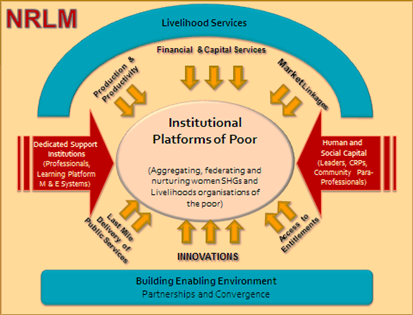
About the National Rural Livelihoods Mission (NRLM)
- Deendayal Antyodaya Yojana – National Rural Livelihoods Mission (DAY-NRLM) is a flagship programme of the Ministry of Rural Development (MoRD) that seeks to alleviate rural poverty through building sustainable community institutions of the poor.
- The project has been decided to be implemented in phases of 10 years each.
- The State Missions under DAY-NRLM finalize the number of households to be mobilized into SHGs based on Socio-Economic Caste Census data and through the process of Participatory Identification of Poor.
Key Initiatives under NRLM
- Mahila Kisan Shashaktikaran Pariyojana and Value Chain Initiatives: It aims to promote agro-ecological practices that increase women farmers’ income and reduce their input costs and risks.
- Community Livelihood Professionals: More than 1.72 lakh community members have been trained including Community Livelihoods Resource Persons such as Krishi Sakhi and Pashu Sakhi who provide 24 X 7 doorstep extension services to small and marginal farmers.
- Start-up Village Entrepreneurship Programme & Aajeevika Grameen Express Yojana: As part of its non-farm livelihoods strategy, Start-Up Village Entrepreneurship Programme (SVEP) and Aajeevika Grameen Express Yojana (AGEY), aim to support entrepreneurs in rural areas.
- Deendayal Upadhyaya Grameen Kaushalya Yojana (DDUGKY): It aims at building placement linked skills of the rural youth and place them in relatively higher wage employment sectors.
- Rural Self Employment Training Institutes: The Mission, in partnership with 31 Banks and State Governments, is supporting Rural Self Employment Institutes (RSETIs) for skilling of rural youth to take up gainful self-employment.
Major Impacts of NRLM on the Society
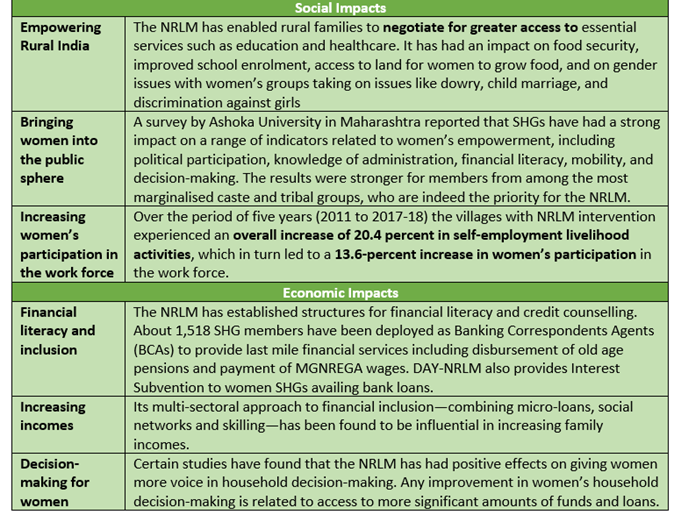
Challenges to NRLM
- Confined to Low- productivity Sectors: Most SHGs remain crowded in low-productivity, primary-sector activities, mainly agriculture, and are bogged down by low absorption of technology. The success of NRLM would depend on raising the abilities of members to diversify into other high-productive activities.
- Forced Credit linkage: It has been observed that the emphasis is merely on achieving the annual targets of the number of SHGs provided with cash credit by each bank branch in the district, and not on the effective usage of these loans. Due to a lack of micro planning, the loan money is often used for unproductive purposes rather than for undertaking a remunerative semi-skilled/skilled activity.
- Ineffective Skill Training: Instead of being a means to enhanced income and improve livelihood, the trainings merely become an end in themselves with neither side taking the learnings forward to ensure that the trainings result in successful livelihood projects.
- Funding Issues: Compared to MGNREGS, the NRLM has historically received minuscule allocations. Putting more money into the Mission can help make it a truly transformative programme that will address livelihood challenges.
Way Forward
- Convergence of SHGs: As with other community-based and development projects, the members of SHGs remain mere beneficiaries and have little control over the decision-making process. Seeking the convergence of SHGs with panchayats will address this concern.
- Non-differentiated Livelihood needs: Livelihoods needs for the three layers of the poor population i.e., ‘less poor’, ‘middle poor’, and ‘poorest/vulnerable poor’ are not identical. The NRLM needs to map their livelihoods, vulnerabilities, and social realities, and then evolve strategies to counter these specific vulnerabilities.
- Extending convergence to livelihoods: In the succeeding years, convergence can be extended for livelihoods and market access. Moreover, the NRLM should tap the start-up and private sector space. Example, Kerala’s Kudumbshree has tied up with Amazon for its programme Amazon Saheli, through which it promotes women entrepreneurs by selling their products to Amazon customers in categories like grocery, and home and fashion accessories.
- Target for Next Phase: In its next phase, the NRLM aims to improve livelihoods by expanding entrepreneurship and creating income opportunities both on- and off-farm. The NRLM will focus on building livelihoods as well as promoting greater convergence with government schemes such as MGNREGS, the Public Distribution System (PDS), National Rural Health Mission, and National Social Assistance Programme.
Question
Critically analyse the success of the National Rural Livelihood Mission. What can be done to make NRLM more inclusive?
Sources:
- The National Rural Livelihoods Mission: Drawing Lessons from the First Ten Years
- NRLM
- GOVERNMENT OF INDIA MINISTRY OF RURAL DEVELOPMENT LOK SABHA
- Deendayal Antodaya Yojana – National Rural Livelihoods Mission: Alleviating rural poverty & fostering diversified livelihoods through sustainable community institutions of poor
- Rural development programmes: Implementation challenges and solutions
This Day in History - Kargil Vijay Diwas
On July 26, 1999, India successfully regained command over all the high outposts, during the Kargil War. To commemorate this day, India celebrates July 26 as Kargil Vijay Diwas. Named after the successful 'Operation Vijay', Kargil Vijay Diwas is the day when the country pays homage to the Kargil War heroes and celebrates victory over Pakistan in the Kargil War. 'Operation Vijay' was the name given to India's limited war against Pakistan after the neighbouring country occupied the high outposts in Jammu and Kashmir's Kargil in 1999.
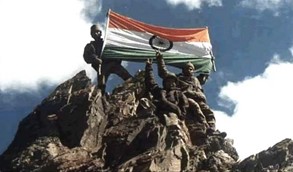
Source:
Image of the Day Ramappa Temple
This is the image of the Ramappa temple at Palampet in Telangana’s Warangal, which has been conferred the tag of UNESCO World Heritage site. Also known as Rudreswara temple, it was constructed in 1213 AD during the reign of the Kakatiya Empire by Recharla Rudra, a general of Kakatiya king Ganapati Deva. The presiding deity here is Ramalingeswara Swamy. It is also known as the Ramappa temple, after the sculptor who executed the work in the temple for 40 years. It is also referred to as the brightest star in the galaxy of medieval temples of the Deccan.
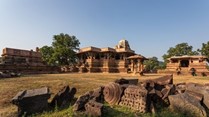
Sources:
Dying Declaration
- Context: A special CBI court has recently convicted two policemen and awarded them life sentences based on ‘dying declaration’ for the custodial death of a murder accused.
- Section-32(1) of Indian Evidence Act, 1872, defines “Dying Declaration” as a statement written, or verbal of relevant facts made by a person on death bed.
- It is the statement of a person who had died explaining the circumstances of his death. This is based on the maxim ‘nemo mariturus presumuntur mentri’ i.e. a man will not meet his maker with lie on his mouth.
- The general rule under Section 60 of the Act is that all oral evidence must be direct- he heard it, saw it or perceived it.
- The grounds of admission under a dying declaration have been based on two broad rules:
- The victim being generally the only principal eyewitness to the crime.
- The sense of impending death, which creates a sanction equal to the obligation of an oath in a court.
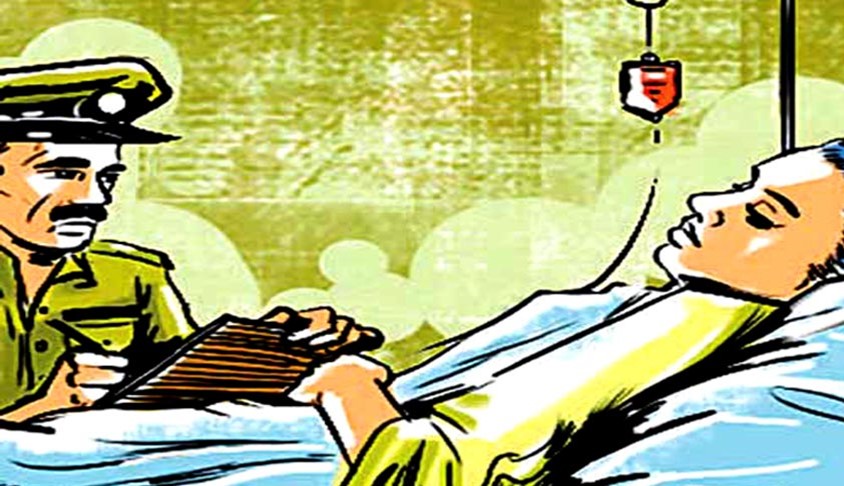
Source:
- Dying Declaration-Section 32(1) of Indian Evidence Act
- Explained: What is a dying declaration, and when can it be set aside?
Image source:
National Security Council
- Context: Amid the Pegasus Controversy, it has been reported that the Union Government’s expenditure on the National Security Council secretariat (NSCS) has increased ten-fold in 2017-18 to Rs 333 crores.
- The National Security Council (NSC) of India is a three-tiered organization (Strategic Policy Group, National Security Advisory Board and Joint Intelligence Committee) that oversees political, economic, energy and security issues of strategic concern.
- NSA is tasked with the responsibility of advising the PM on issues of national security and strategic interests.
- It operates within the executive office of the prime minister of India, liaising between the government’s executive branch and the intelligence services, advising leadership on intelligence and security issues.
- It was constituted in 1999 to fill the wide vacuum in the country’s higher defence management.
- The National Security Advisor presides over the NSC and is also the primary advisor to the prime minister.
- The Ministers of Home Affairs, Defence, External Affairs and Finance and vice-chairperson of NITI Aayog, and deputy NSAs are its members.
Source:
‘Gatekeeper Model’ to prevent suicides in prisons
- Context: National Institute of Mental Health and Neuro-Sciences (NIMHANS), Bengaluru has recommended the “Gatekeeper Model” to prevent suicides triggered by mental health issues in prisons across the country.
- Referring to the Bangalore Prison Mental Health Study, the advisory pointed to the prevalence of mental illness and substance use disorder in about 80% of the prison population.
- It recommends the “Gatekeeper Model”, where selected inmates, trained to identify prisoners at risk of suicide, would refer them to treatment or supportive services.
- The advisory also mentioned the concept of a ‘Buddy System’ which is social support through trained prisoners called “buddies” or “listeners” which was found to have a good impact on the well-being of suicidal prisoners.
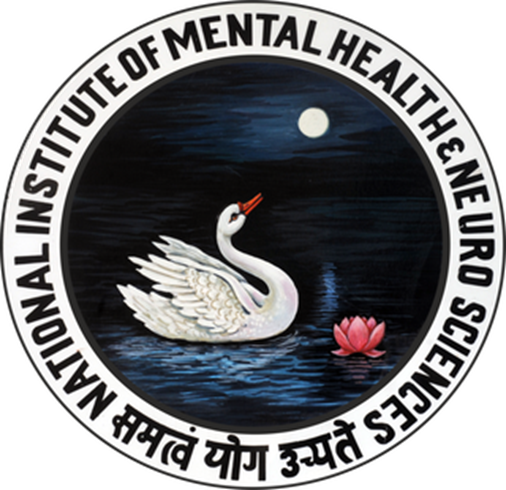
Source:
Image source:
Eisner award
- Context: Graphic artist Anand Radhakrishnan has won the prestigious Eisner award.
- This prestigious Award is considered the Oscars equivalent of the comics world.
- The Eisner Awards were founded in 1988 by American comics editor Dave Olbrich, in response to the discontinuation of the popular Kirby Awards for comics in 1987.
- The Eisners are named in honour of the pioneering writer and artist Will Eisner.
- The awards are announced each year at the San Diego Comic-Con, San Diego, California.
- The award won by Radhakrishnan- Best Painter/Multimedia Artist (interior art) - recognizes the creator of a graphic novel’s art and images.

Source:
Image source:
Lessons from India’s food security response- TH
Essence: This article is written considering the impact of COVID-19 on the food security of the poor and marginalized in India. Several studies shows that various government programs proved to be lifeline for millions hit by the pandemic. But this pandemic has once again drawn attention towards needs to improve access and inclusion of food among the vulnerable population. For this we need to take steps like- introduction of One Nation One Ration Card; building resilient agriculture; preventing post-harvest losses; transforming food systems with the upcoming UN food systems summit.
Why should you read this article?
- To get an overview of impact of COVID-19 pandemic on food security of the poor and marginalized in India.
- To know what steps India should take to address these challenges of food security in India.
Source:
State should do its duty towards citizens, not interfere in their economic lives- IE
Essence: The article provides an essence of what the citizen of India should ask for, from the government. It compares the levels of education of Indian worker during 1980s and highlights the gross negligence in providing basic services to people. In terms of medical infrastructure, as late as 2020, there were five hospital beds per 10,000 Indians, placing India at 155 out of 167 countries in the ranking.
The article says that government services like banking, electricity, vaccine delivery, all have been fraught with inefficiency. On the other hand, private sector participation has ensured better service delivery in education, health, etc. It has lifted India’s GDP and brought 200 million Indians out of poverty.
The government shouldn’t participate in restricting international trade but should participate in providing labor, land, financial and health reforms to the economic system of the country.
Why you should read this article?
- To capture important data points about progress in India’s health and education sector.
- To learn about the inefficiencies of the government mechanism.
State should do its duty towards citizens, not interfere in their economic lives
Source:
State should do its duty towards citizens, not interfere in their economic lives
Transforming the face of village from drought land to green village.
Background
- In 1989 village of Hiware Bazar in Maharashtra was struggling with frequent droughts, low agricultural yield, lack of resources and an alcohol problem.
- In the same year, Popatrao Pawar took over as the sarpanch.
Contribution of Popatrao Pawar
- Water harvesting: he started a rainwater harvesting and watershed conservation.
- Plantation drive: He encouraged the villagers to plant lakhs of trees which transformed village experiencing drought into the "green model village".
- Spurt in water wells: From just 90 wells in the 1990s the number has increased to around 294 water wells.
Outcome
- Increase in groundwater table: Contour trenches and watershed management helped in recharge of groundwater.
- Increase in revenue of village: It revived farming and boosted the source of income with major focus on cattle farming.
- Social reforms: Environment movement also emphasised on social reforms like ban of alcohol, mandatory HIV test before marriage, etc.
- Gram swaraj: All these policies together turned Hiware Bazar into a self-sufficient, clean, and green village.
Source:
Sarpanch Who Transformed His Drought-Prone Village Wins Padma Shri
Share the article
Get Latest Updates on Offers, Event dates, and free Mentorship sessions.

Get in touch with our Expert Academic Counsellors 👋
FAQs
UPSC Daily Current Affairs focuses on learning current events on a daily basis. An aspirant needs to study regular and updated information about current events, news, and relevant topics that are important for UPSC aspirants. It covers national and international affairs, government policies, socio-economic issues, science and technology advancements, and more.
UPSC Daily Current Affairs provides aspirants with a concise and comprehensive overview of the latest happenings and developments across various fields. It helps aspirants stay updated with current affairs and provides them with valuable insights and analysis, which are essential for answering questions in the UPSC examinations. It enhances their knowledge, analytical skills, and ability to connect current affairs with the UPSC syllabus.
UPSC Daily Current Affairs covers a wide range of topics, including politics, economics, science and technology, environment, social issues, governance, international relations, and more. It offers news summaries, in-depth analyses, editorials, opinion pieces, and relevant study materials. It also provides practice questions and quizzes to help aspirants test their understanding of current affairs.
Edukemy's UPSC Daily Current Affairs can be accessed through:
- UPSC Daily Current Affairs can be accessed through Current Affairs tab at the top of the Main Page of Edukemy.
- Edukemy Mobile app: The Daily Current Affairs can also be access through Edukemy Mobile App.
- Social media: Follow Edukemy’s official social media accounts or pages that provide UPSC Daily Current Affairs updates, including Facebook, Twitter, or Telegram channels.

![Production-linked Incentive (PLI) Scheme for Specialty Steel • Digital Rupee • Renewable Energy Certificate (REC) Mechanism • This Day in History - Bal Gangadhar Tilak • Image of the Day – King Cobra • Project 75 (India) [P-75(I)] • Harela Festival • Avian Flu/ H5N1 • Expanding India’s foreign policy canvas – Hindustan Times • Bangladesh's Microfinance: Case study for reducing poverty](https://edukemyprodstorage.blob.core.windows.net/edukemy-v2-assets-public/newsletter-images/1627053778blobid1627053773170.jpg/6qOdfWHokMxecfCInlsNiohdzUmiiR170zseon9s.jpg)
